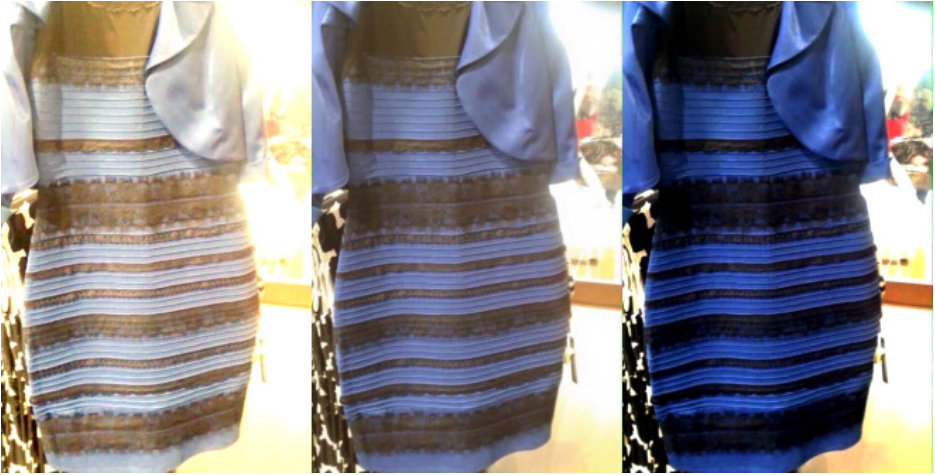
A few weeks ago, many of us woke to a media firestorm surrounding the question, ‘What color is that dress, gold and white or blue and black’? While many shrugged and said, ‘who really cares’, there were those of us who thought of it as a fun and interesting discussion to follow, especially those of us who find the topic of color perception to be fascinating. While in this instance it seems that the dress patterning and differences in lighting may have both played roles in the variant dress color, we should also consider color perception. The simple fact that much of how we experience color is subjective, that is to say, that color resides within the realm of human sensation.
As it turns out, two things are certain; first, color vision is a complex topic and second, it is one that most of us don’t really think much about. Yes, we might delight in an especially lovely color or proclaim to others that of which is our favorite color but we rarely, if ever, wonder or question how it is that we ‘see’ color.
Many people, if they do give any thought to how we experience color, make the assumption that a color is a color is a color and that unless someone has a color vision deficiency such as color blindness, an object is seen as the same color by all. This is not the case: The way that we perceive color, like so many other facets of the human experience, is subjective (not only is beauty in the eye of the beholder, but as it turns out, so is color). Have you shopped with a friend and commented on a shirt or backpack, maybe referring to it as say ‘blue’ only to have your friend point out that you are clearly wrong, that the color of the item is obviously ‘purple’? If so, you have experienced firsthand that color is subjective and that people can and do experience the same item as being a different color or hue.
Upfront, let me say that color perception is far more complicated than will be discussed here, but an overly simplified explanation goes something like this (this assumes normal color vision):
Our visual system is most sensitive to that portion of the electromagnetic spectrum called visible radiation (or what we commonly refer to as ‘light’). This is approximately that portion of the spectrum sitting between 360nm - 760nm. If you think about the range of colors that you see when you pass a light beam through a prism, or when you witness a rainbow and that is the approximate range that we humans are visually equipped to see.
When ambient light is present, it strikes an object. Depending on the characteristics of that object, some of the spectrum's light waves are absorbed by the object while some are not absorbed but, instead, reflected.
When we then view or see that object, the portion of visible light that is reflected off of the object enters the eye as a physical stimulus, where it quickly comes in contact with a small area at the back of the eye called the retina. The retina is tiny, but powerful. It is made up of specialized neurons called photoreceptors that are sensitive to light. Once the light enters the eye and comes in contact with these photoreceptors, the physical stimulus (light) begins a process that eventually triggers a series of neural signals that travel to the part of the brain responsible for vision and it is there that the brain attempts to process the neural patterns produced by this chain of events and make sense of them. Now, we are no longer experiencing the physical properties of the stimulus but are instead experiencing the ‘personal’ sensation of that experience. It is at this point in the process that the subjective or individual aspects of color perception begin and we can interpret the color of an object in different or individualistic ways. As is the case with any aspect of human experience, our perceptions personalize those experiences and they become a collective part of that which we jokingly say ‘is all in our head’.
There are so many factors and any one or any combination of several can influence our decision as we decide what color we believe an object to be. These factors can be past experiences, memories, expectations, age, education, culture - just to name a few. It is safe to say that we still do not know all there is to know about this fascinating aspect of the human experience.
So, now I will ask you again, ‘what color is that dress?’












Comments
Add Comment